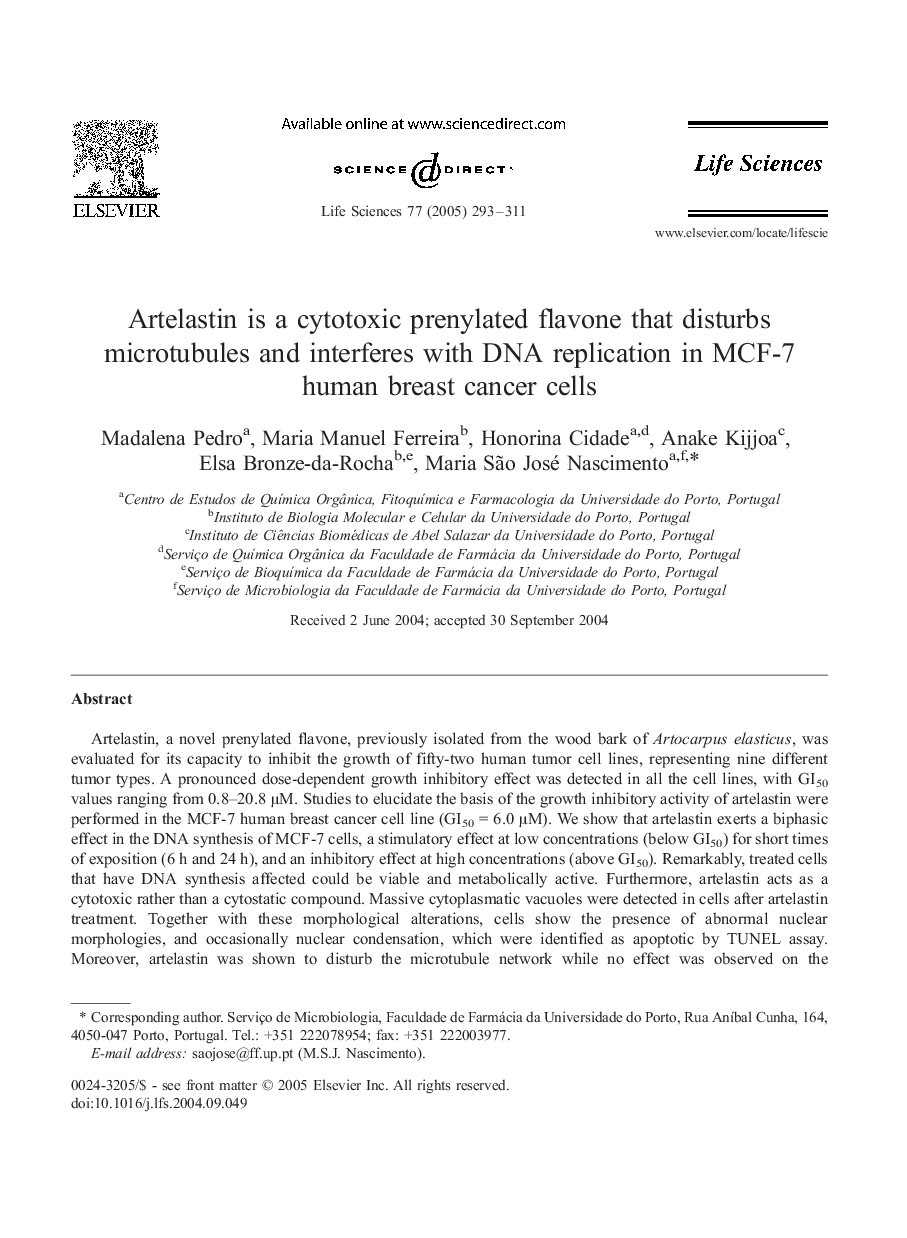| Article ID | Journal | Published Year | Pages | File Type |
|---|---|---|---|---|
| 9012510 | Life Sciences | 2005 | 19 Pages |
Abstract
Artelastin, a novel prenylated flavone, previously isolated from the wood bark of Artocarpus elasticus, was evaluated for its capacity to inhibit the growth of fifty-two human tumor cell lines, representing nine different tumor types. A pronounced dose-dependent growth inhibitory effect was detected in all the cell lines, with GI50 values ranging from 0.8-20.8 μM. Studies to elucidate the basis of the growth inhibitory activity of artelastin were performed in the MCF-7 human breast cancer cell line (GI50 = 6.0 μM). We show that artelastin exerts a biphasic effect in the DNA synthesis of MCF-7 cells, a stimulatory effect at low concentrations (below GI50) for short times of exposition (6 h and 24 h), and an inhibitory effect at high concentrations (above GI50). Remarkably, treated cells that have DNA synthesis affected could be viable and metabolically active. Furthermore, artelastin acts as a cytotoxic rather than a cytostatic compound. Massive cytoplasmatic vacuoles were detected in cells after artelastin treatment. Together with these morphological alterations, cells show the presence of abnormal nuclear morphologies, and occasionally nuclear condensation, which were identified as apoptotic by TUNEL assay. Moreover, artelastin was shown to disturb the microtubule network while no effect was observed on the kinetochores. Flow cytometry analysis of cells treated with artelastin reveal an accumulation in S phase that interferes with the cell cycle progression. Additionally, according to BrdU patterns, studies with synchronized cells at G0 and at G1/S transition also suggest that artelastin delays DNA replication since progression of cells trough S-phase is perturbed.
Related Topics
Health Sciences
Medicine and Dentistry
Cardiology and Cardiovascular Medicine
Authors
Madalena Pedro, Maria Manuel Ferreira, Honorina Cidade, Anake Kijjoa, Elsa Bronze-da-Rocha, Maria São José Nascimento,
